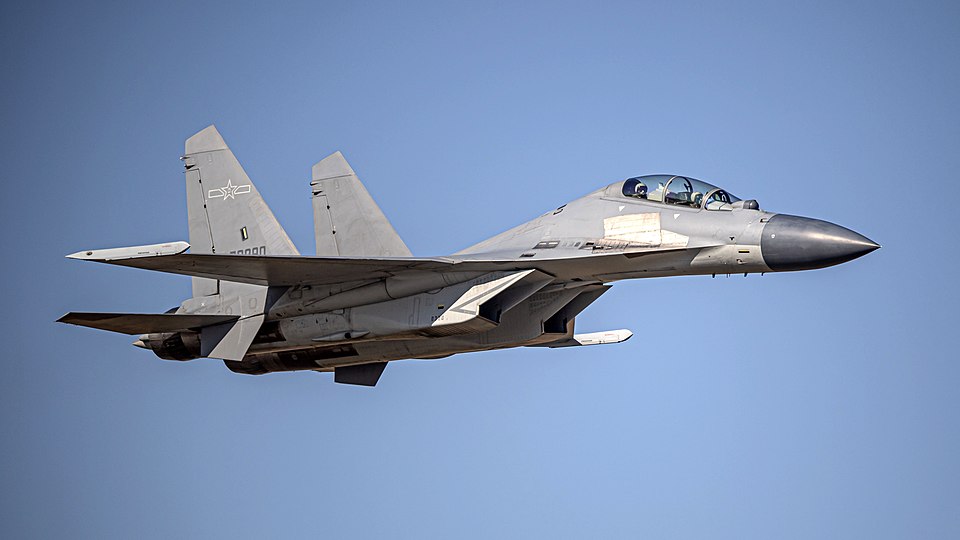J-16 Qianlong
Summary
| Category | Combat Aircraft |
| Origin country | 🇨🇳 China |
| Manufacturer | Shenyang |
| First flight | 1 January 2011 |
| Year introduced | 2015 |
| Number produced | 365 units |
Description
The Shenyang J-16 was developed to address the growing obsolescence of the People's Liberation Army Air Force's (PLAAF) JH-7 fleet at the turn of the century. Building upon its experience with licensed production of the Russian Su-27, which became the Shenyang J-11, the Shenyang Aircraft Corporation derived the J-16 multirole strike fighter from the tandem-seat J-11BS model. Representing a strategic shift away from dependency on Russian technology, the program aimed to produce a superior indigenous derivative. The aircraft is believed to have made its first flight between 2011 and 2012, with the PLAAF receiving its first regiment in 2014. The J-16 officially entered service in 2015 and was publicly unveiled in 2017. By 2018, production had fully superseded that of the single-seat J-11B fighter.
The J-16 is a tandem-seat, twin-engine, 4.5-generation strike fighter featuring significant technological advancements over its predecessors. Its airframe incorporates a greater amount of composite materials to reduce overall weight and is coated with radar-absorbent paint to lower its radar signature. It is powered by two Chinese Shenyang WS-10A afterburning turbofan engines. The advanced avionics suite is centered on an Active Electronically Scanned Array (AESA) radar and includes an Infrared Search and Track (IRST) system. The cockpit is equipped with a helmet-mounted display (HMD) to enhance pilot situational awareness. Furthermore, a variant is in development that reportedly replaces the co-pilot with an artificial intelligence algorithm, indicating a push towards advanced autonomous combat capabilities.
The J-16 is equipped for a wide range of missions with a versatile weapons payload carried on 12 external hardpoints. Its primary internal armament consists of a 30 mm GSh-30-1 cannon. For air-to-air combat, it can be armed with missiles such as the PL-9, PL-10, PL-12, PL-15, and the long-range PL-17. Its air-to-ground and anti-shipping capabilities are enabled by munitions including the KD-88 and AKF-98 air-to-surface missiles, YJ-83K and YJ-12 anti-ship missiles, various guided bombs like the LS-500J, and unguided rockets. The aircraft can also carry anti-radiation missiles for Suppression of Enemy Air Defenses (SEAD) missions, supported by equipment like the YINGS-III targeting pod.
Since entering service, the J-16 has been actively deployed by the People's Liberation Army Air Force, most notably in operations over the South China Sea and in the Taiwan Strait, where it is frequently utilized, possibly due to its advanced electronic warfare capabilities. In May 2022, a J-16 intercepted a Royal Australian Air Force P-8 Poseidon in international airspace, releasing flares and chaff in close proximity to the surveillance aircraft. A year later, in May 2023, a J-16 conducted what was described by the U.S. as an "unnecessarily aggressive" maneuver against a USAF RC-135, flying directly in front of its nose. China has justified these actions as responses to provocative operations near its territory.
Main Variants
- J-16D: An electronic warfare variant designed for Suppression of Enemy Air Defenses (SEAD) missions, featuring prominent wingtip EW pods and an internal EW system that replaces the standard IRST and 30 mm cannon.
Technical specifications
| Version: J-16 | |
|---|---|
| Crew | 2 |
| Operational range | 3,000 km (1,864 mi) |
| Maximum speed | 2120 km/h (1317 mph) |
| Wing area | 62 m² (667.4 sqft) |
| Wingspan | 14.7 m (48.2 ft) |
| Height | 6.4 m (20.9 ft) |
| Length | 21.9 m (71.9 ft) |
| Service ceiling | 17,300 m (56,759 ft) |
| Empty weight | 17,700 kg (39,022 lbs) |
| Max. takeoff weight | 35,000 kg (77,162 lbs) |
| Climb rate | 230.0 m/s (754.6 ft/s) |
| Powerplant | 2 x Shenyang WS-10B afterburning turbofans delivering 13600 kgf each |
Current operating countries
All operators
